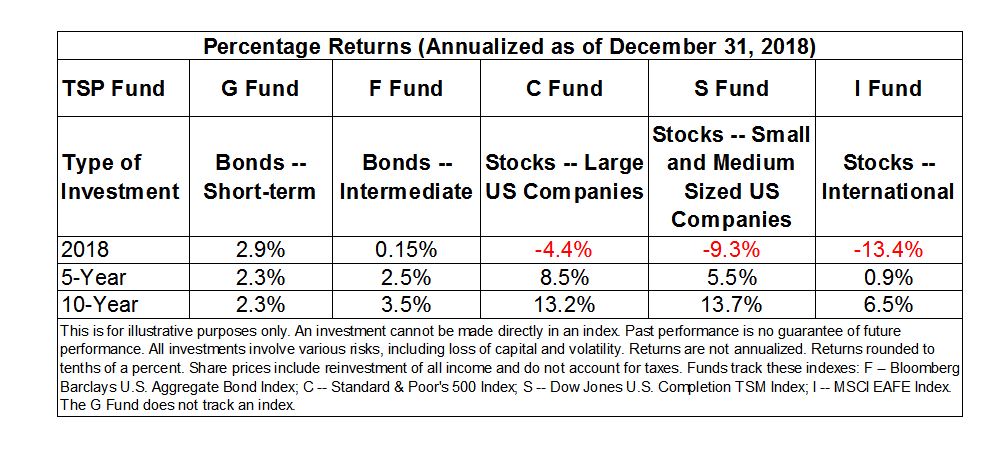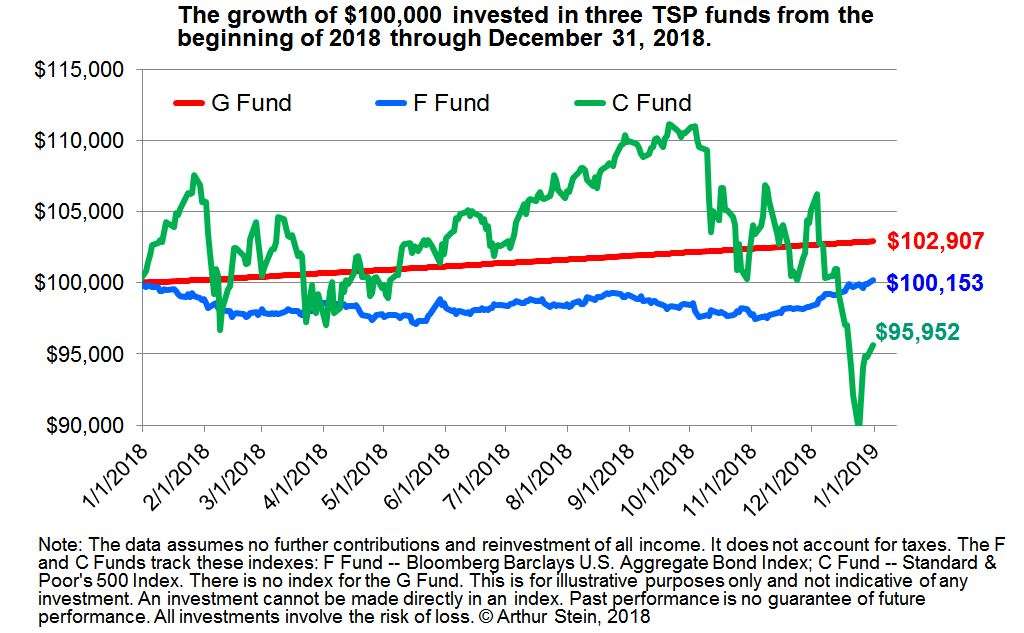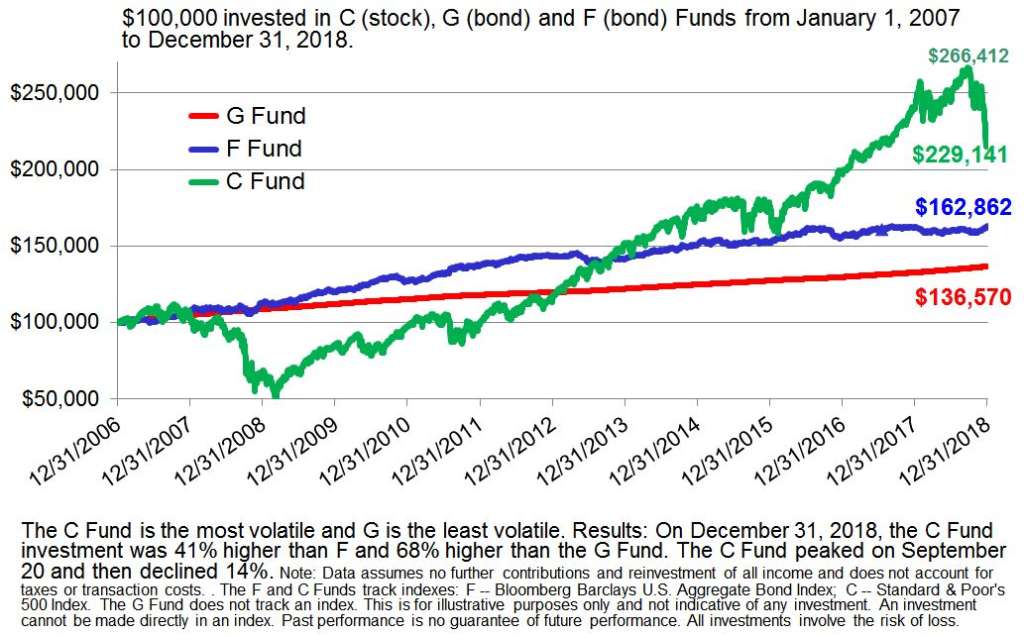
Is your TSP account shrinking?
Many feds, young, old or retired, invested heavily in the stock-indexed C, S and I funds are nervous about their Thrift Savings Plans. We asked financial planne...
Everybody knows the expression what goes up also goes down. Repeat as necessary.
We know the stock market retreats and advances. But after the longest running with the bull market for almost a decade, 2018, or at least the last half of it, was a bummer. Many feds, young, old or retired, invested heavily in the stock-indexed C, S and I funds are nervous in the service.
So we asked financial planner Arthur Stein what’s going on. A majority of his customers are active or retired feds, and several of them are Thrift Savings Plan millionaires. Stein will be my guest on today’s Your Turn radio show which begins at 10 a.m. EST. Follow his blog and see his take on 2018 and beyond:
A Volatile Year Ends Poorly for the TSP Stock Funds
“2018 was not kind to investors in the Thrift Savings Plan stock funds. The C and S funds sharply declined in the fourth quarter and were down for the year. International stocks posted even lower returns than U.S. stocks.
 “Volatility was significantly higher than in 2017.
“Volatility was significantly higher than in 2017.
“Often-cited reasons for the declines include:
- Trade wars
- Slowing economies in China and other countries
- Interest rate increases by The Federal Reserve
- Political volatility in the U.S., Europe and the Middle East
- Increasing worldwide debt
- Lowered estimates for future earnings increases and growth in the U.S economy
- Poor performance by Apple, Facebook and other market leaders.
“Because so much is not known about the actual effects of these and other issues, it is important to stay focused on what we do know. Historically, stocks significantly outperformed bonds over long periods of time. That is illustrated in the table above and the graph below.
“Many TSP participants react to stock market declines and volatility by overinvesting in the bond funds and underinvesting in the stock funds. They ignore historical trends indicating that stocks in well-diversified and well-managed portfolios outperformed bonds over longer time periods by high enough margins to justify the additional risks of market declines and financial risks.
“Volatility and declining markets are unnerving and stressful. But successful investing is a marathon, not a sprint. Even intense volatility and declines like those in the fourth quarter should not alter your long-term financial plan.
“That plan should include an allocation target (desired percentages in stock funds and bond funds) based on your financial position, risk tolerance and investment timeline. Maintain a clear focus on longer-term goals, remain patient and stick to your plan.
“The usual warnings apply: Past performance is no guarantee of future performance; investments involve the risk of loss of principal and earnings; ‘average annual returns’ even out variations in the actual year-to-year returns; stocks and bond investments fluctuate in value and there will always be times when they lose value; and the S&P 500 Index is still overdue for a ‘Bear Market,’ a 20 percent or greater decline.”
Nearly Useless Factoid
By Amelia Brust
The most expensive dog ever sold was a Tibetan mastiff puppy, which was purchased in China for nearly $2 million in 2014. A property developer bought the canine — the breed is a wealthy status symbol — from a breeder who reportedly claimed the animal had “lion’s blood.”
Source: CNBC
Copyright © 2024 Federal News Network. All rights reserved. This website is not intended for users located within the European Economic Area.
Mike Causey is senior correspondent for Federal News Network and writes his daily Federal Report column on federal employees’ pay, benefits and retirement.
Follow @mcauseyWFED







